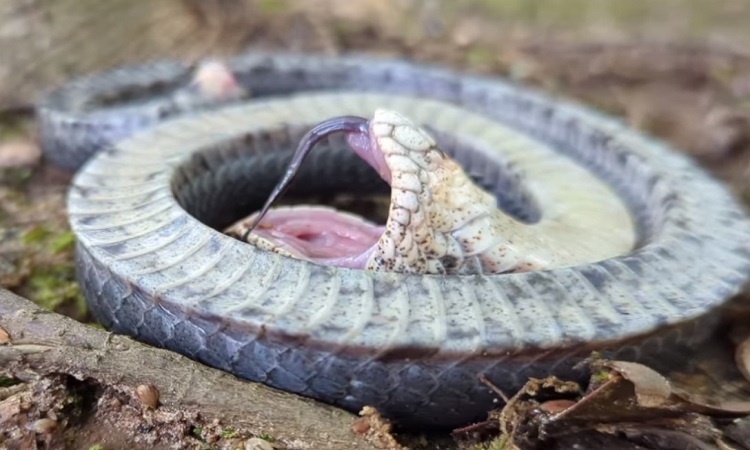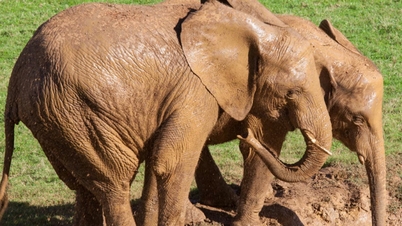A snub-nosed snake in Georgia felt threatened by a snake catcher, so it writhed and played dead, its mouth wide open and its tongue curled to one side.
The snub-nosed snake's death-playing tactic. Video : James Dowling
Snake catcher James Dowling of Houston County Georgia Snake Removal & Relocations captured the trick of an eastern snub-nosed snake, a snake native to Georgia, on May 21, attracting more than 254,000 views on Facebook, according to Newsweek. As a defense mechanism, snub-nosed snakes often pretend to be dead in the hope that the threatening object will lose interest and leave. Once the danger has passed, the snake will resume normal activity and continue to hunt for food.
The above feigning trick is scientifically known as thanatosis . The eastern snub-nosed snake, also known as the puff snake, is famous for this behavior, although researchers have occasionally seen it in other snake species. In sequence, the snake will writhe violently for a few seconds, then lie on its back, its mouth wide open and its tongue curled to one side.
“The behaviour is based on the idea that most animals don’t scavenge,” explains Mark O’Shea, professor of herpetology at the University of Wolverhampton in the UK. “If you play dead, a potential predator might leave you alone.”
According to the book Herpetology, playing dead often goes hand in hand with excretion. In Dowling’s video, as the snake struggles, excretions shoot out through its scaly body. Scientists aren’t sure what causes this, but they suspect it may have something to do with the snake’s diet.
The eastern snub-nosed snake is particularly fond of toads and is immune to the venom used to defend itself by its prey, according to the University of Georgia. However, some of the venom may be in the snake’s feces, acting as a secondary chemical mechanism to ward off predators. When the snub-nosed snake plays dead, it is in fear. The immense pressure is draining it of energy.
Eastern snub-nosed snakes are found throughout the eastern United States and are easily recognized by their distinctive snout. They grow to about three feet in length and are not dangerous to humans. Although they are mildly venomous, their venom only harms their prey.
An Khang (According to Newsweek )
Source link












































































































Comment (0)